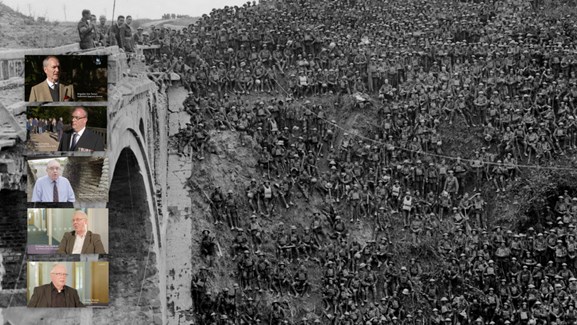Commemorating the attack on Riqueval Bridge : one of the greatest battles fought by the British Army
- Home
- Latest News
- 2018
- October 2018
- Commemorating the attack on Riqueval Bridge : one of the greatest battles fought by the British Army
The attack on the St Quentin Canal was one of the greatest battles ever fought by the British Army.
Once taken, on 29 September 1918, the Riqueval Bridge became a vital supply line over the St Quentin Canal for artillery, tanks, trucks and men.
- Hear about the daring attack by Captain Charlton to take the bridge with nine men.
- Hear about the assault by the 46th (North Midland) Division.
- Hear what made the Battle of St Quentin Canal so crucial.
- Discover how the Hindenburg Line was broken.
- Know why this success had the German Commander Erich Ludendorff conclude that the War was now lost.
This video features interviews with Captain Charlton's grandson, military historians and some of today's retired former commanders of the Staffordshire Regiment who together piece together this remarkable story and important historical event.
Interviews with:
Brigadier Jim Tanner : Staffordshire Regiment Museum
Major Edward Green (Ret'd) : Staffordshire Regiment Museum
Dr John Bourne : Military Historian
David Charlton : Royal Canadian Navy (Ret’d) [Grandson of Captain Charlton D.S.O.]
Professor Gary Sheffield : The Western Front

Taken soon after the capture of Riqueval Bridge, this photograph shows Brigadier Major-General John Campbell addressing the multitude of British soldiers on the bank of the St. Quentin Canal.
Read More:
>> How 30,000 Life-Jackets were found
Featured Image : Battle of St. Quentin Canal. Brigadier-General John Vaughan Campbell VC addressing men of the 137th Brigade (46th Division) on the Riqueval Bridge over the St. Quentin Canal (part of the German's Hindenburg Line) which they crossed on 29 September 1918. (c) IWM (Q 9535)





